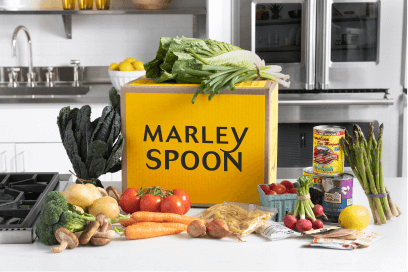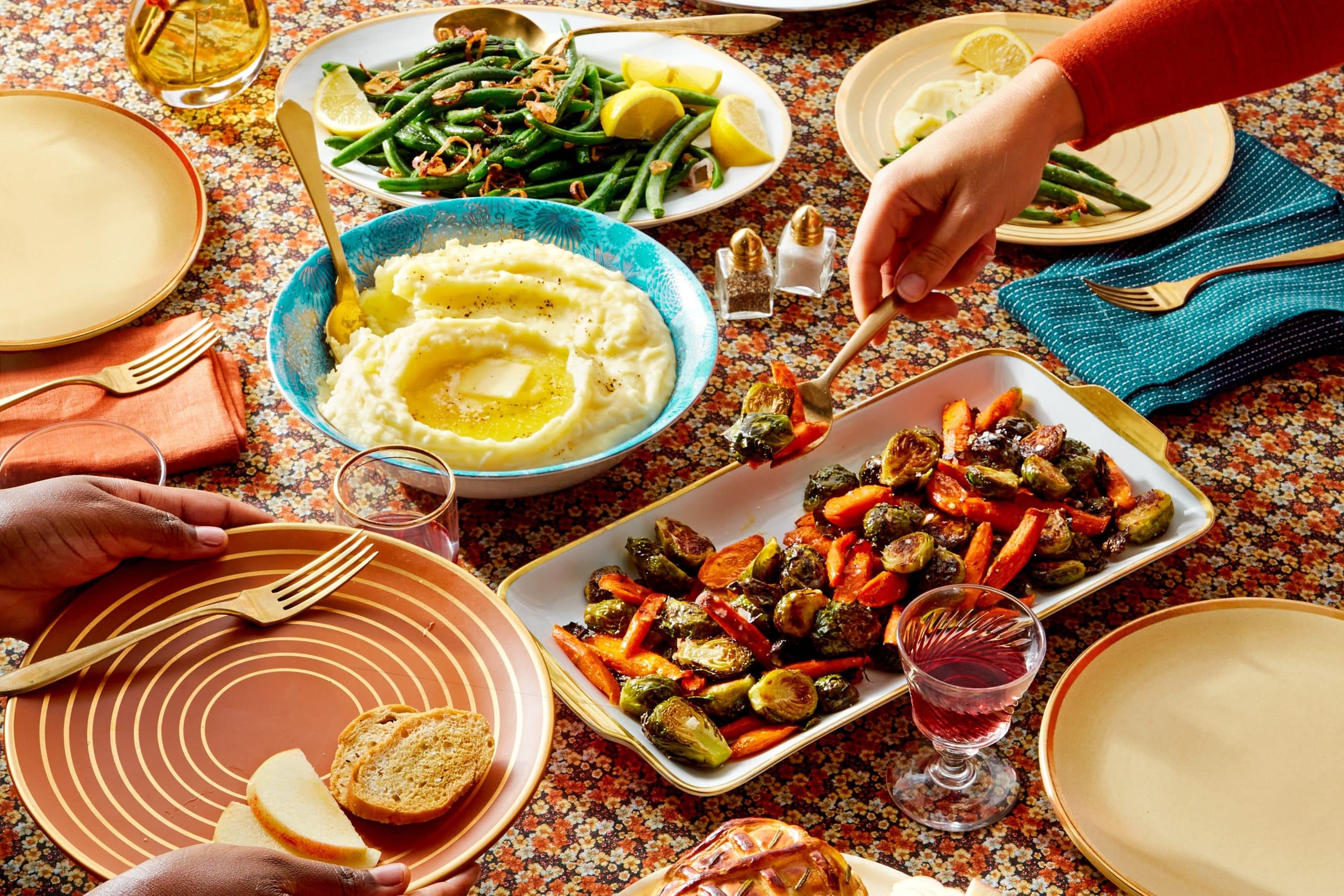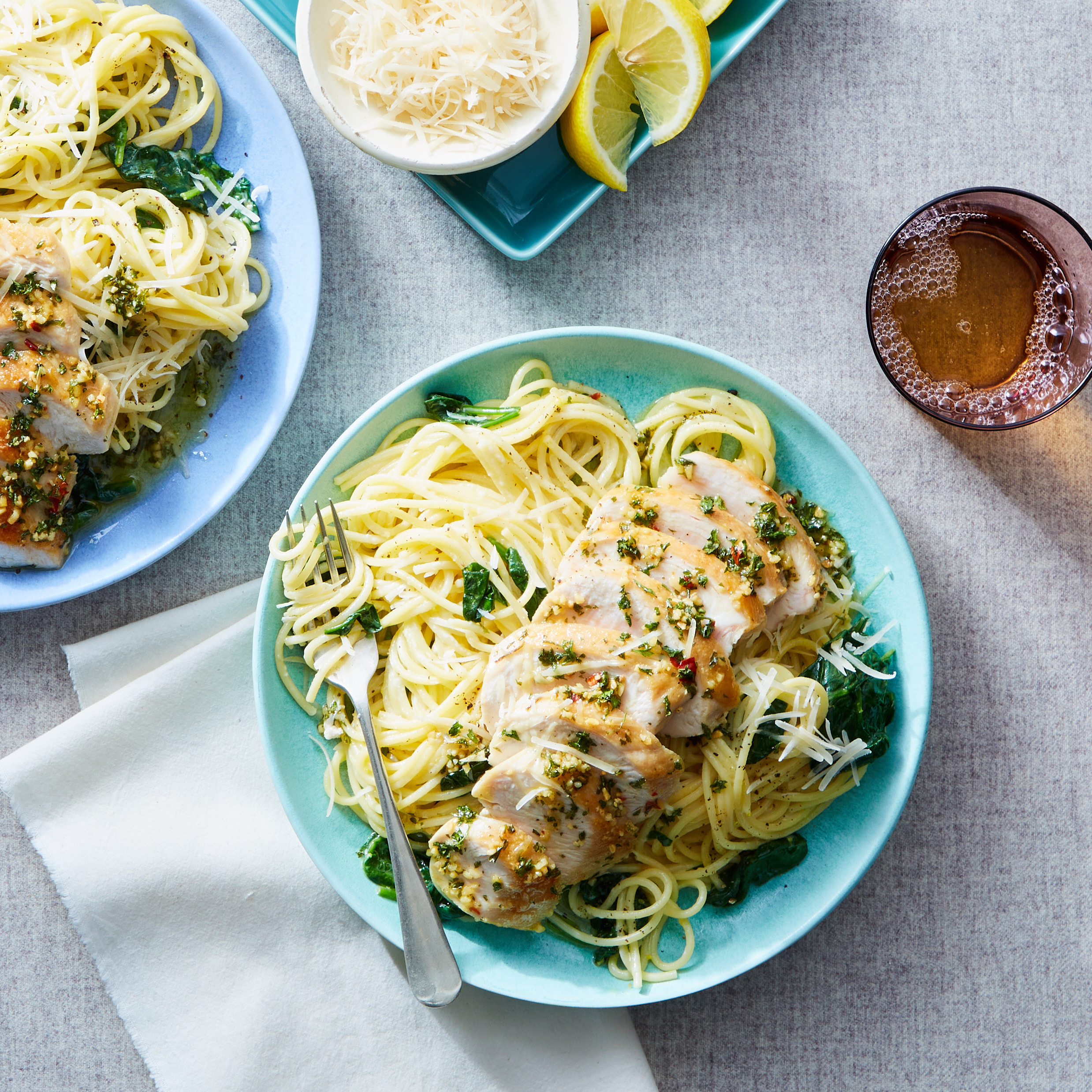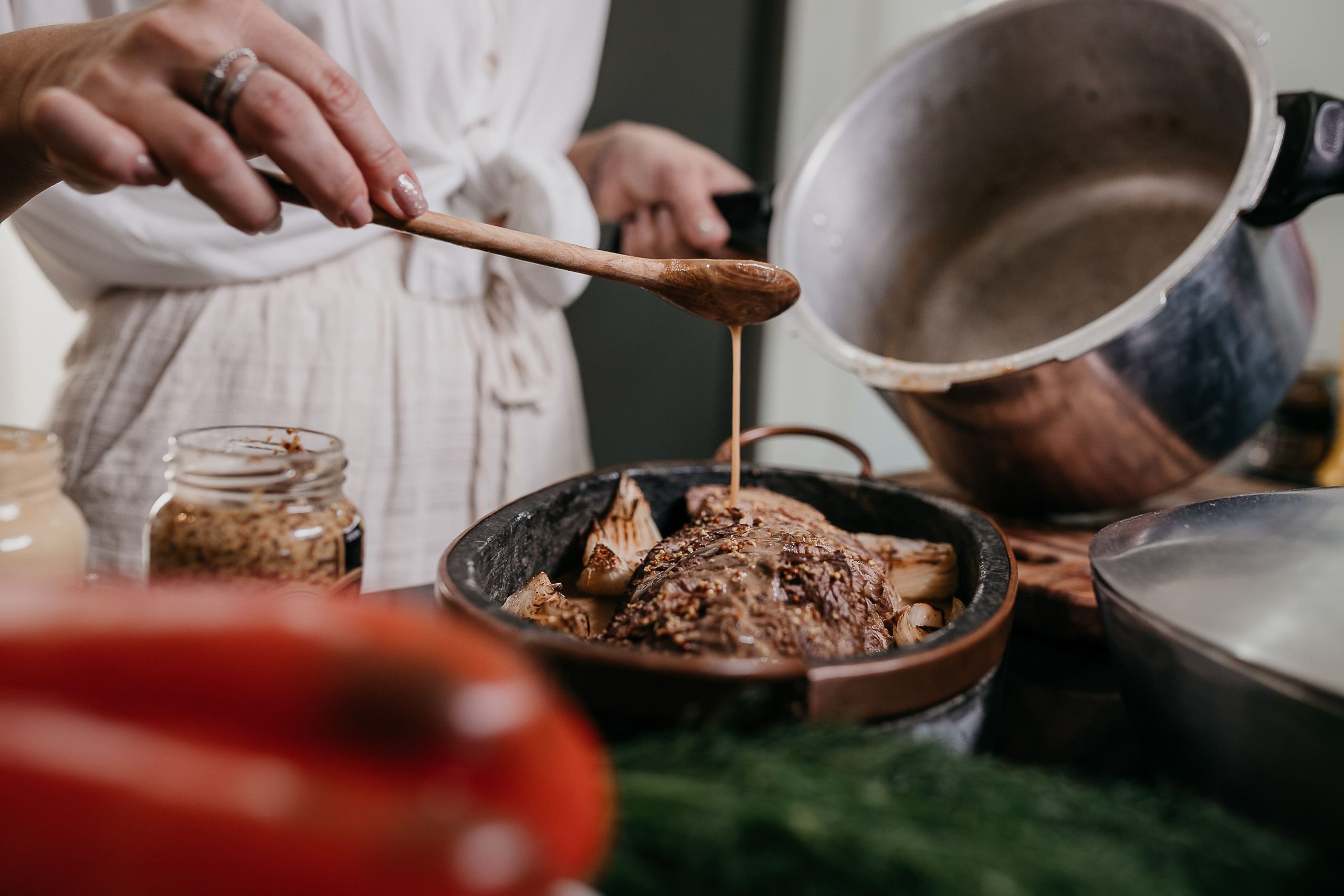These are just a few examples of vegetarian expert and cookbook author Lukas Volger’s beautiful creations. Sure, these meals might sound fancy, but if you spend a few minutes browsing his website or Instagram, you’ll discover that his recipes, for the most part, don’t require elaborate techniques. These are dishes you’ll want to cook up during the week, for a quick lunch or a light dinner. His recipes are often simple, no-fuss, and are always elegant. They’ll call for leftover grains, a sturdy green you’ve got tucked away in your fridge, or that dusty can of beans you’ve been avoiding for months. The genius is in how humble ingredients such as the sweet potato or ramen noodles get elevated into delicious, flavorful meals.
New to Marley Spoon? Sign up today with our customers’ favorite discount code in 2022
So you can imagine my excitement when I heard about Lukas’ new cookbook, Bowl, a book entirely devoted to vegetarian bowl recipes. I was even more thrilled to learn that many of his recipes speak to our cooking philosophy at Marley Spoon. Like us, Lukas creates his recipes around seasonal ingredients and special condiments to spike up a weeknight meal. In his cookbook, Lukas celebrates the vegetarian one-dish meal, and just like the ramen bowl that inspired his book, his recipes are an exercise in balance, both flavorful and fresh—what he describes as a “light, clean fullness.”
Eager to learn more about these magical bowl recipes and how we can go about achieving the same results in our home kitchens, I asked Lukas to share a few tips:
How did you fall in love with the bowl? Is it a vessel you’ve been experimenting with for a while?
What planted the seed for Bowl was the amazing vegetarian ramen at Chuko in Brooklyn. I couldn’t wait to try making it at home. From there I started tinkering with pho and bibimbap, and it wasn’t until I stepped back from those dishes that I realized that what they had in common was the vessel. And meanwhile, I was eating a lot of my food out of bowls because it’s such an appealing way to eat. At some point the full scope of the book snapped into focus.
Do you have any tips for a “bowl” beginner? With so many gorgeous photos of grain bowls out there, it can be daunting for a novice cook to create their own bowl recipe at home. Where does one begin? Do you have any tips on assembling a bowl?
There are very few rules when it comes to bowls, and bowls are so endlessly adaptable and suited to improvisation. The two main virtues are that they encourage whole-foods oriented eating, and that the whole meal is in there.
Here’s the general breakdown for a bowl—you can see how much of it can be thrown together on the fly.
-
A base of grains or noodles + broth, which supply the backbone
-
Some protein: eggs, tofu, tempeh, beans (or fish or meat)
-
Vegetables for bulk and texture—this is where the farmer’s market comes in: roasted squash, sautéed mushrooms, blanched broccoli rabe, grilled zucchini, a big handful of tender greens
-
“Accent” veggies, for a burst of juiciness, crunch, or zing: sliced radishes, quick-pickled onions or cucumbers, some thinly sliced chilis, sprouts/shoots, julienned scallions
-
Garnishes: like toasted nuts or seeds, frizzled shallots, fried garlic, fresh herbs, crumbled nori, a sprinkle of togarashi
-
Sauce: a plop of plain yogurt which could be spiked with a few gratings of garlic or ginger (or chili paste), pesto, pico de gallo, gochujang sauce, a drizzle of olive oil or seasoned oil, ginger-scallion sauce
A common weeknight dilemma is how to enjoy a delicious homemade meal that doesn’t take forever to prep and cook. Do you have any shortcuts for getting amazing flavor in less time and with less effort?
For me, the secret to tasty and healthful weeknight eating is to plan ahead. I try to roast off a few sheet pans of roasted veggies, get all my salad greens washed, maybe make a big batch of marinated kale, cook off a half-dozen boiled eggs. This really suits the “bowl”-style of cooking and eating, where you’re just assembling an assortment of complimentary components. If you have the components ready, you’re not far from a really good, nourishing meal.
Also, a quick digression: I looooooooovvveee my rice cooker. I would have never predicted that I’d become a rice cooker evangelist, but here we are. It just takes all of the risk, headspace, and guesswork (and stovetop real estate) out of cooking grains.
In the Marley Spoon test kitchen, we have our go-to “flavor boosters,” like Dijon mustard and sherry vinegar. Do you have any similar condiments (or other ingredients) that you like to keep in your pantry? Which ones are your favorites?
One of my favorite newish-to-me condiments is kecap manis, the thick, slightly sweet Indonesian soy sauce. It’s a wonderful back-pocket trick, drizzled over anything that needs a distinctive, umami edge—a bowl of rice, a plate of roasted sweet potatoes, or a dish of savory oatmeal topped with a fried egg. I’m also a big fan of the quick pickle as a condiment. In Bowl I have a great recipe, where you toss sliced cucumbers in a mixture of salt and sugar and let them drain, then squeeze dry and sprinkle the cucumbers with rice vinegar. Then there’s gochujang, the Korean fermented chili paste, which is a terrific condiment to incorporate into your repertoire. Gochujang sauce is very common in bimimbap (where the paste is thinned out with some vinegar and other ingredients) but it can also be used similarly to harissa or tomato paste, in marinades, or as a flavor boost for soups, dressings, and stir-frys. I even like it spread on a cracker.
Is there a specific bowl recipe you’ve been obsessed with lately? If so, what’s so fantastic about it? Could you break it down for us?
Maybe it’s just wishful thinking for the farmers market to finally start showing some color, but spring pho is really speaking to me! The formula is very simple: a fragrant, carefully balanced vegetarian pho broth, piping hot; an assortment of tender green things—baby bok choy or gem lettuce, peas—gently poached; then they’re combined with rice noodles and a big spoonful of well caramelized spring onions. Of course you can top it with a few thin slices of chili and some fresh, grated ginger. I like it because it’s so clean and fresh, and just what I want to eat in the springtime.
You’re a seasoned recipe and cookbook writer—this isn’t your first cookbook. What did you learn while writing Bowl? In what ways did this book feel different from your previous ones?
I loved spending so much more time working on this book than my other ones. And as testament to the glory that is a bowl, I never got tired of any of the food while I was writing and testing. I’m eating out of a bowl right this second! (By comparison, I needed to take a break from veggie burgers after I finished Veggie Burgers Every Which Way.)
***
Lukas has so generously shared a recipe from Bowl, just in time for the arrival of spring:
Spring Ramen with Snap Peas, Shaved Asparagus, and Lemon Zest

This bowl features juicy sweet snap peas and the delicate, sharp flavor of shaved raw asparagus in a light broth that’s brightened with lemon zest and fresh ginger. It also incorporates a streamlined kombu-soaking step, so that the dashi doesn’t need to be prepared in advance.
(serves 4)
8 oz asparagus
4 dried shiitake mushrooms
2 plump garlic cloves, smashed
9 cups water
4 2-inch squares kombu
2 Tbsp light-colored miso paste
1 tsp fine sea salt
4 oz sugar snap peas
8 oz dried or 12 ounces fresh ramen noodles
2 2-inch squares toasted nori
4 large boiled eggs, molten or firm yolks (optional)
4 pinches of freshly grated lemon zest
Freshly grated ginger, to taste
1 cup frizzled scallions (recipe below)
Toasted sesame oil, for garnish
– Snap off the tough ends of the asparagus and set the top parts aside. Combine the tough asparagus ends, mushrooms, garlic, and water in a stockpot or saucepan and bring to a boil. Reduce the heat and simmer for 20 minutes. Add the kombu, remove from the heat, and let stand for 30 minutes. Strain out and discard the solids and return the broth to the stockpot.
– In a tall glass or measuring cup, or the plastic cup that usually comes with an immersion blender, combine the miso and a ladleful of the hot broth. Purée thoroughly with an immersion blender until smooth. (Alternatively, purée in a blender.) Pour the mixture into the stockpot with the rest of the broth and bring to a bare simmer. Add the salt and taste, adding more salt as necessary. Keep covered over low heat until ready to serve.
– Use a vegetable peeler to shave the asparagus spears into ribbons. It’s easiest to do this by laying them flat on a cutting board, and using a Y peeler.
– Bring another saucepan of salted water to boil and prepare an ice bath. Remove the fibrous strings from the snap peas: Pinch one end and pull along the straight edge of the pea as if it’s a zipper. Once the water comes to a boil, add the snap peas and blanch for 90 seconds. Use a slotted spoon to transfer the peas to the ice bath. Reserve the boiling water.
– Add the noodles to the boiling water, in a strainer basket or the pasta insert that comes with your stockpot, if you have one, and cook until tender, usually 4 to 7 minutes for dried, (or according to the package instructions), or 60 to 90 seconds for fresh. Lift out the noodles, reserving the cooking water and rinse the noodles thoroughly under cold running water in order to remove excess starch. Quickly dunk them back into the hot water to reheat. Divide among four bowls.
– Just before serving, wave the nori squares over the flame of a gas burner a few times, until the corners curl and they turn crisp, or roast under a broiler, flipping periodically. Slice into thin strips with a chef ’s knife, or crumble with your fingers.
– Arrange the shaved asparagus, snap peas, and egg halves, if using, over the noodles in each bowl. Add a pinch of lemon zest and a few gratings of ginger to each bowl, then cover with the piping hot broth. Divide the frizzled scallions on top, garnish each serving with a few drops of sesame oil and the nori, and serve immediately.
Frizzled Shallots or Scallions
(makes about 1/2 cup)
Crispy, shallow-fried wisps of shallot or scallion are a perfect condiment to most any dish in this book, lending a burst of salty crunch. Since they don’t retain their crispiness for more than a few hours, don’t prepare them too far in advance. But if you make them the first step in your cooking, you’ll be left with a shallot- or scallion-scented oil that can be strained and repurposed in other elements of the meal. Cutting the shallots into uniformly thin rings is important so that they all cook at the same rate. A mandoline is the tool to use.
3 medium shallots, or ½ bunch scallions
Neutral-tasting oil
Fine sea salt
– If using shallots, peel, then slice into very thin rings using a mandoline.
– If using scallions, trim the ends off the scallions, then cut into 2- to 3-inch lengths. Cut each piece in half lengthwise. Lay the flat surface down on the cutting board and use a sharp knife to cut these segments into thin matchsticks.
– Heat ½-inch of oil in a small skillet or saucepan over medium heat. Test the temperature by adding a piece of shallot or scallion—it should sizzle on contact. Add the vegetables and cook, stirring frequently, until reddish brown all over, 6 to 12 minutes. Watch closely, as they can quickly burn toward the end.
– Use a spider skimmer or slotted spoon to transfer them to a paper towel–lined plate. Sprinkle with a pinch of salt and let cool completely. Use within a few hours.
– To save and repurpose the oil, strain it into a clean container through a few layers of cheesecloth to catch any solids. The oil can be kept for up to 1 week.
Text excerpted from BOWL © 2016 by Lukas Volger. Reproduced by permission of Rux Martin Books/Houghton Mifflin Harcourt. All rights reserved.
Photos by Michael Harlan Turkell





